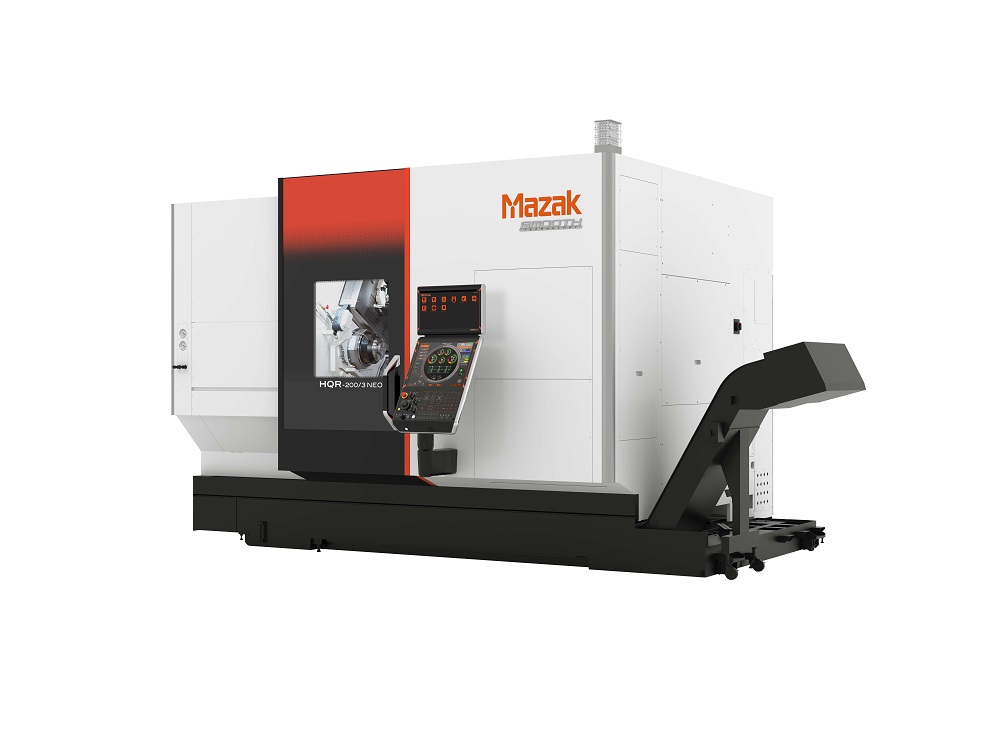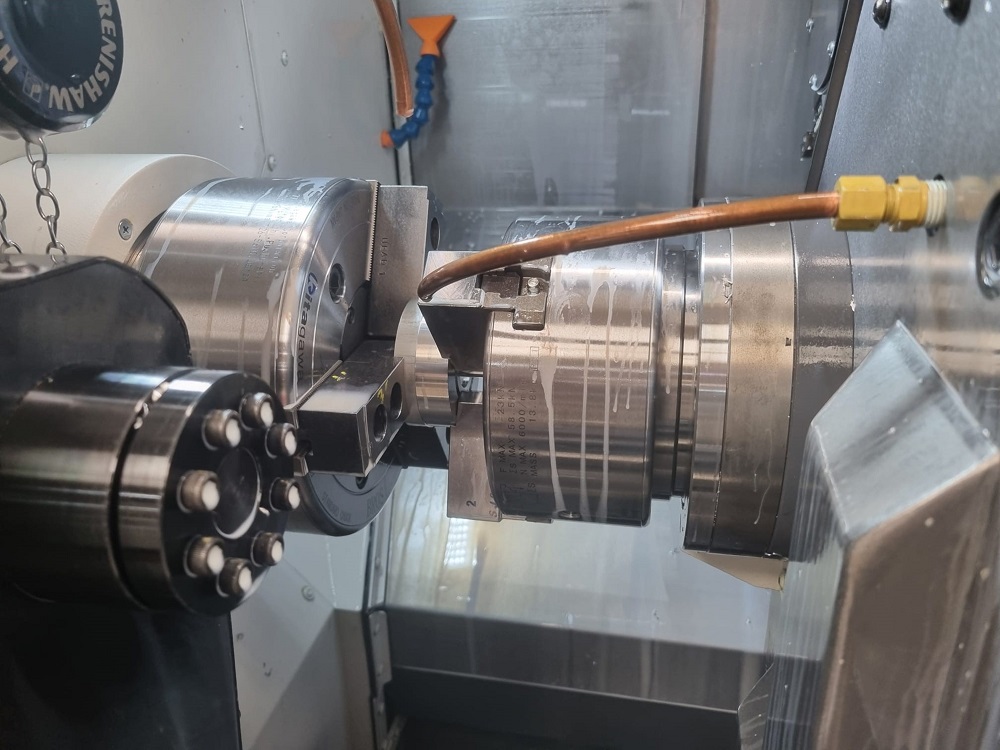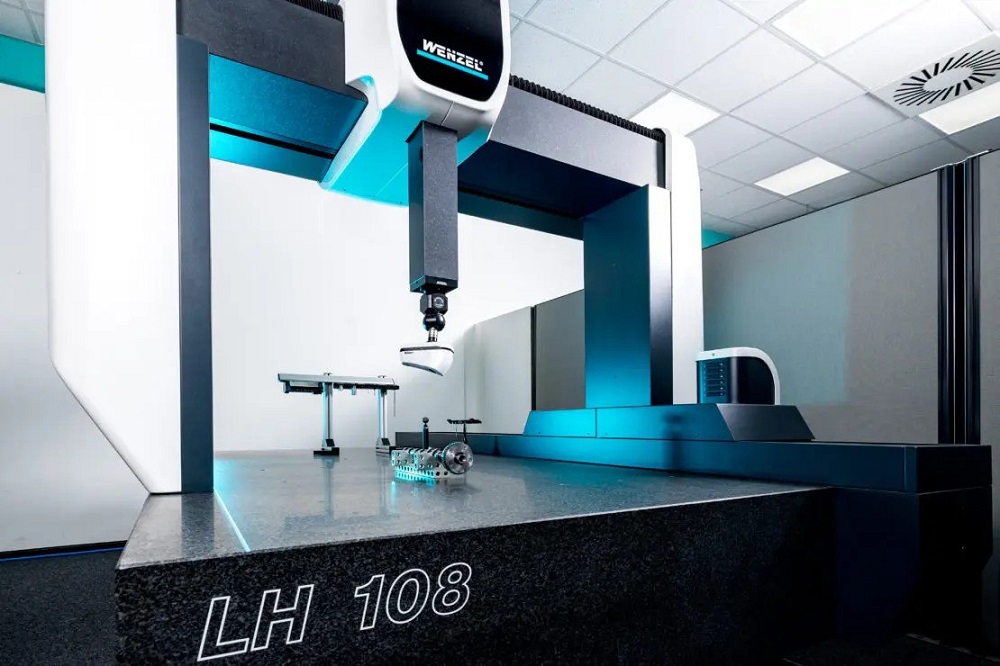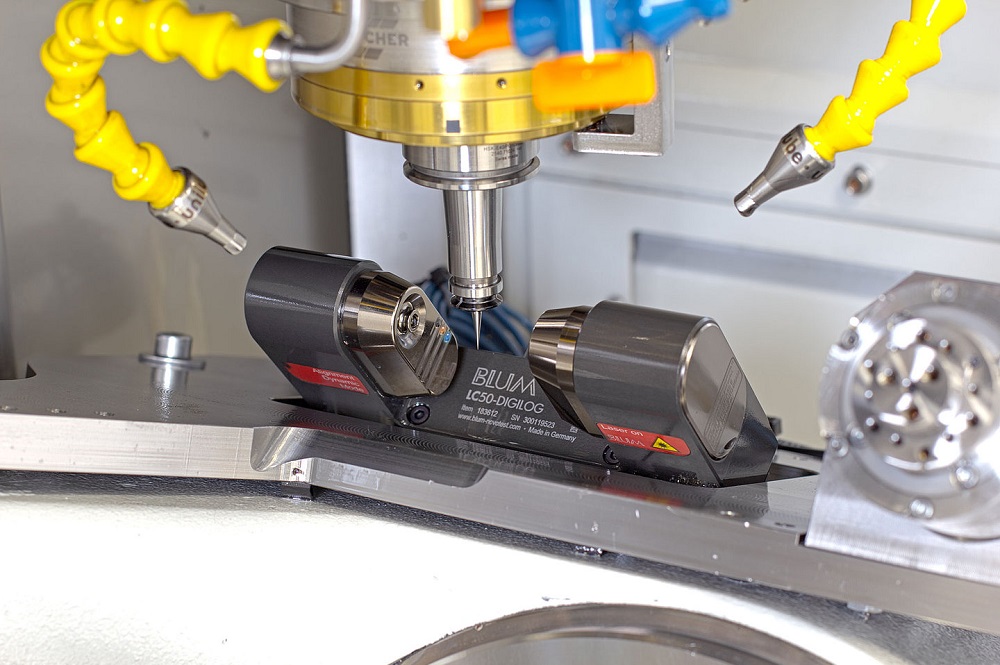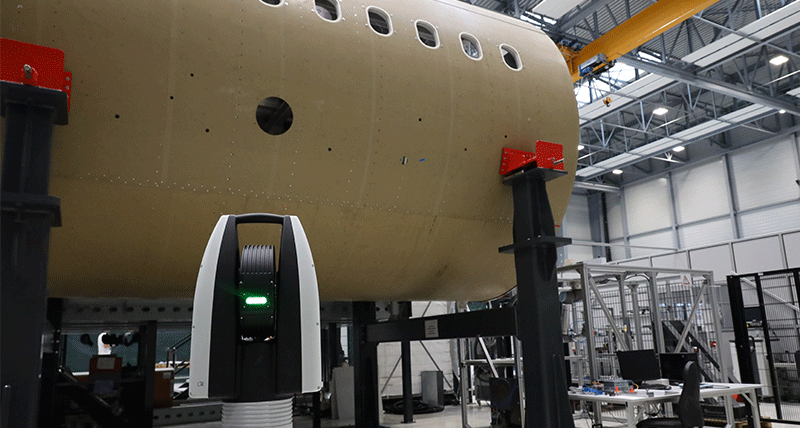Yamazaki Mazak unveiled the latest addition to its range of high-volume turning centres at the AMB 2024 exhibition in Stuttgart recently. The new HQR-200/3 NEO promises increased levels of productivity alongside high accuracy and efficiency.
Mazak’s HQR-200/3 NEO features three turrets and two spindles. With manufacturers striving for productivity and profitability, the additional third turret achieves a faster return on investment by reducing cycle time by approximately 25%, based on an example component produced using a two-turret configuration. The added tool stations enhance processing capabilities to complete complex parts in a single set-up.
Suitable for medium-to-high batch sizes across the aerospace, automotive and general subcontract industries, the new machine design – which is only 120mm deeper than the two-turret version –increases the maximum workpiece size for lower-turret chuck work from 212 to 320mm diameter.
The HQR-200/3 NEO on show at AMB was part of a model series comprising two spindle sizes and three turrets. Complementing the standard 65 and 80mm diameter bar-working capability, the HQR-200/3 NEO is available with an optional enlarged 112mm spindle bore for bar work up to 102mm diameter. Unique to Mazak, this enlarged spindle bore option facilitates the machining of prismatic components from bar material using only a turning centre – work that otherwise would require a machining centre to complete.
Enhanced automation features include a redesigned unloading hand that contributes to a 20% reduction in unloading time compared with previous models, while the Smooth Oscillating Cutting function automatically breaks up chips and swarf to prevent unwanted build-up.
More information www.mazakeu.co.uk






